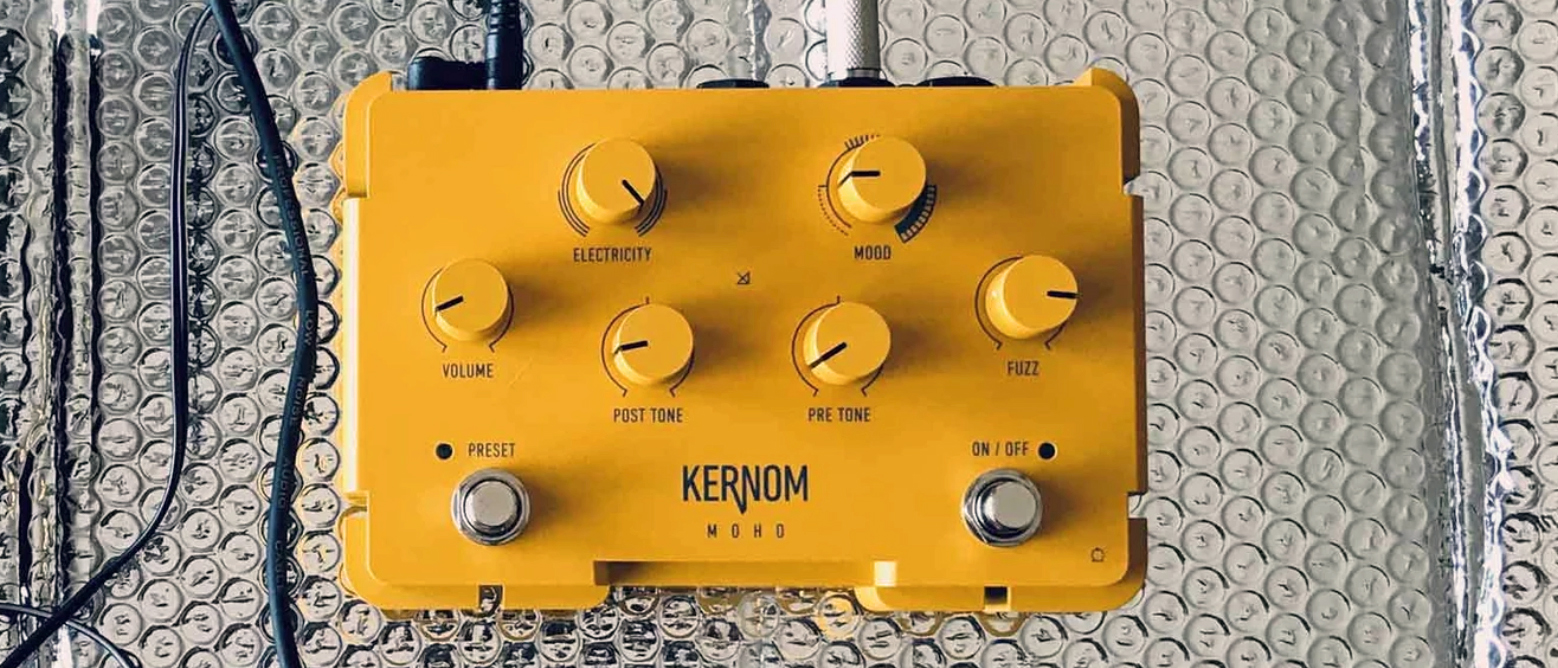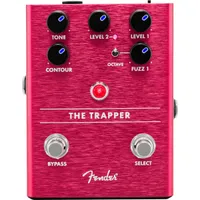Guitar World Verdict
The Kernom Moho Fuzz is a banquet table of tone, delivering everything from the thin fuzz of the early 60s right through to today’s modern, modulated, synth-like textures. There are so many options here that it’s going to take you a very long time to extract them all, and no matter what type of fuzz you enjoy, you’ll find something to love here.
Pros
- +
Gives you fuzz sounds from the 60s to modern-era experimental.
- +
Has a genuinely baffling amount of potential tones.
- +
Powerful EQ makes it easy to sculpt your sound.
- +
The chassis is one of the most durable I’ve ever come across.
Cons
- -
Octave up sound is a little lackluster on certain settings.
- -
It’s rather large and heavy.
You can trust Guitar World
What is it?
It feels like every week there’s a new fuzz pedal launched, and the vast majority of them tend to be throwbacks to the 60s and 70s. Every now and then though, we get something that takes the age-old effect and does something totally different with it. Rather than focusing on recreating a particular flavor, the Kernom Moho Fuzz gives you the full history of fuzz pedals with a single sweep of a knob.
Packing five variants that chart the way from Fuzz Face and Tone Bender through to Big Muff and then into modern, synth-like textures, the ‘Mood’ knob of the Moho allows you to seamlessly blend between tones, giving you access to some potentially interesting in-between sounds along the way.
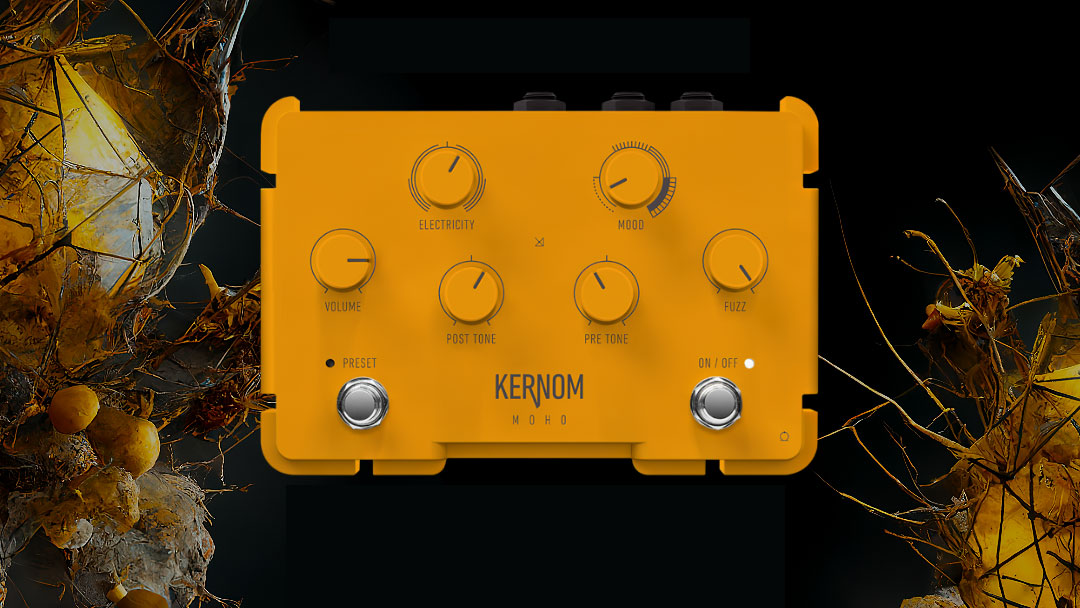
There’s no modeling here either; these are analog fuzz circuits empowered by digital controls for a genuine fuzz tone. It also features a built-in octaver and a ring modulator, so if you like things weird, that’s an option too. Add in 128 presets accessible via MIDI, plus the ability to use an expression pedal to morph through different sounds in real-time, and you’ve got a fuzz that’s way more than just another vintage redux.
Specs
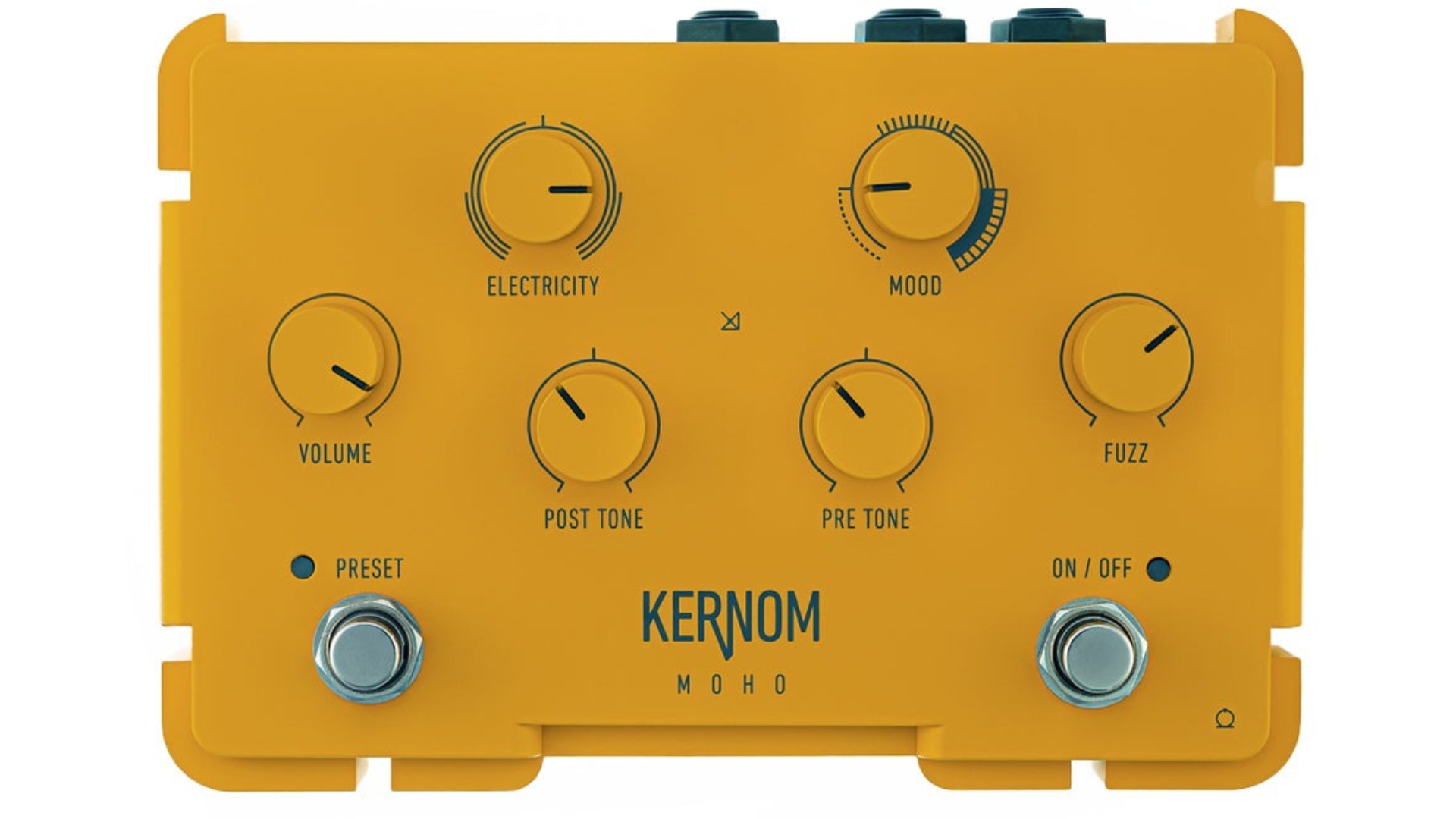
- Launch price: $349 | £339 | €349
- Type: Multi-fuzz pedal
- Controls: Electricity, Mood, Volume, Post Tone, Pre Tone, Fuzz
- Features: Built-in octaver and ring modulator
- Connectivity: Audio in, audio out, expression in, MIDI in, MIDI out
- Bypass: True Bypass (electromechanical relay switching)
- Power: 9V DC, 300mA power supply (not included)
- Dimensions: 11.2 cm deep x 16.4 cm wide x 5.2 cm tall (4.4 inches deep x 6.5 inches wide x 2 inches tall)
- Weight: 850g (1.8 lbs)
- Options: N/A
- Contact: Kernom
Build quality
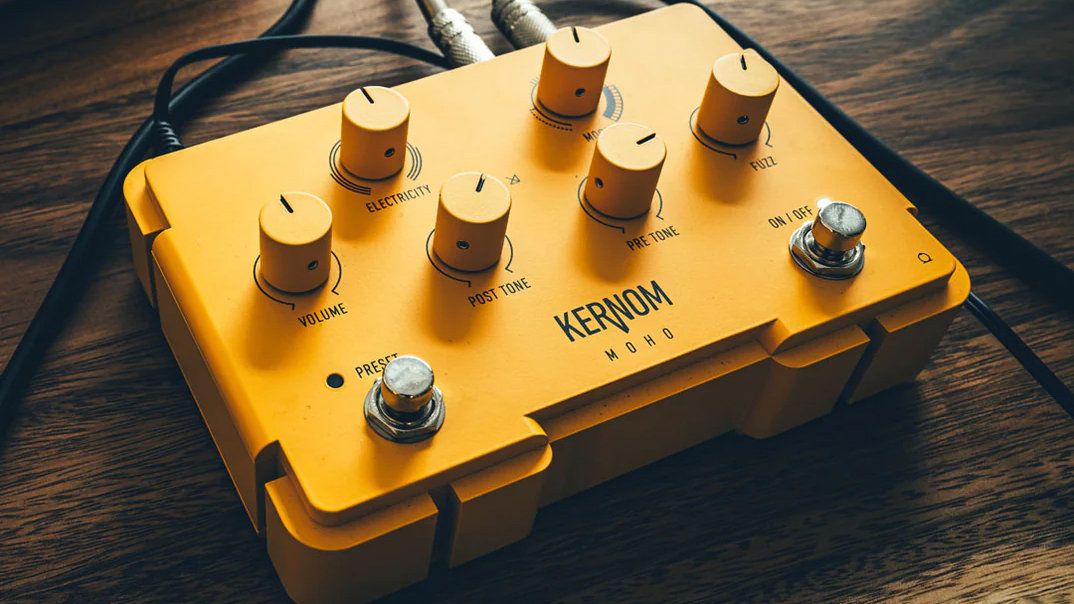
Build quality rating: ★★★★★
As I pull the Kernom Moho Fuzz out of its packaging, my first remark is that this is a substantial bit of kit. Coming in at just below two pounds it’s densely built, and will take up a fair bit of space on your pedalboard. Its rectangular shape with rounded edges and cutouts gives it a very unique look, with the matt butter yellow paint job ensuring it’ll stand out on a dark stage.
The chassis is made from 5mm aluminium, which combined with the analog circuits inside, contributes to making it such a burly beast. The casing is amongst the most solid-feeling of any pedal I’ve come across, so solid in fact that I reckon it could easily outlast any billionaire’s bunker. The knobs are applied in a similarly robust way, with a smooth turn that’s stiff, allowing for very fine adjustments.
Usability
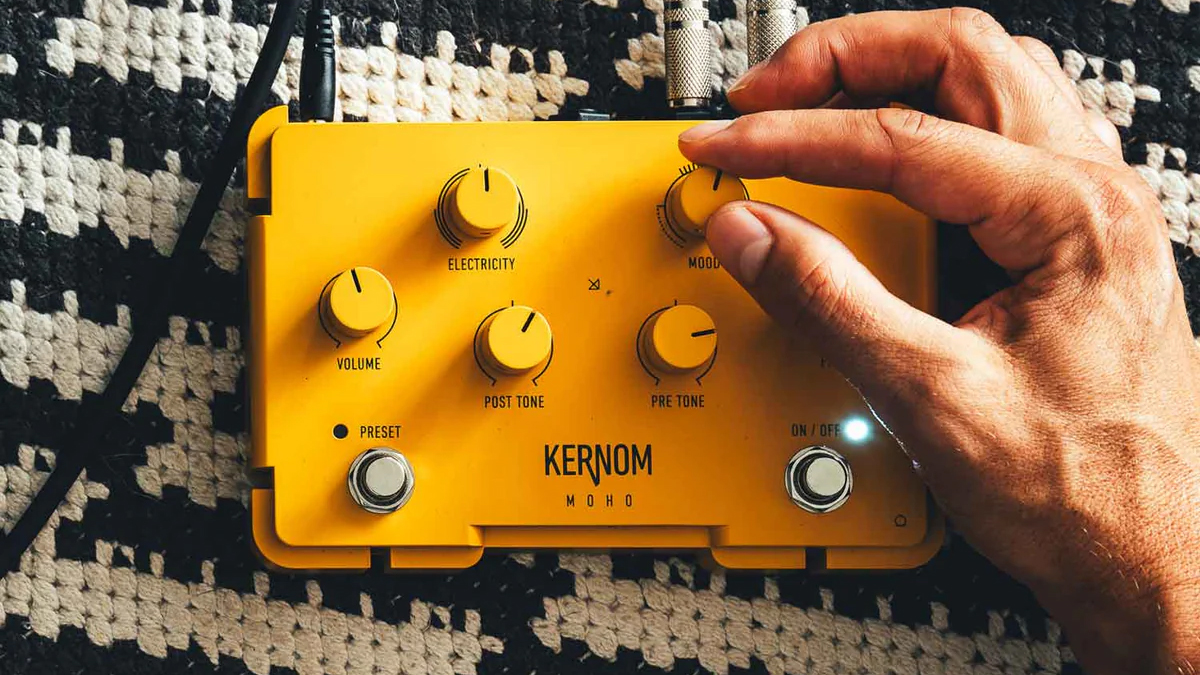
Usability rating: ★★★★½
All the latest guitar news, interviews, lessons, reviews, deals and more, direct to your inbox!
The in-between settings are where the ring modulator gets brought into the fold
The heart and soul of the Moho Fuzz lies in its mood knob, which allows you to travel the continuum of fuzz pedals from the vintage trappings of velcro fuzz through to the more experimental sounds of the modern era. It’s marked by various dots, dashes, lines, and colored blocks across its path of travel, which give some insight into the type of sound you’ll get from it.
In another unusual turn, there’s also an electricity knob, which allows for further augmentation of your tone via the addition of an octave up, octave down, or a ring modulator for further sound accentuation. The fully anti-clockwise position gives you your low tones, while the fully clockwise position adds the high octave. The in-between settings are where the ring modulator gets brought into the fold.
It all adds up to a myriad of different fuzz tones just with those two knobs, but the Moho isn’t done there. The pre-tone knob affects your signal before it goes into the fuzz circuit, acting as a bass boost at the leftmost position, with a bass cut on the furthest right. The post tone knob acts as a high EQ of sorts, removing high harmonics to the left, while the right position adds more presence.
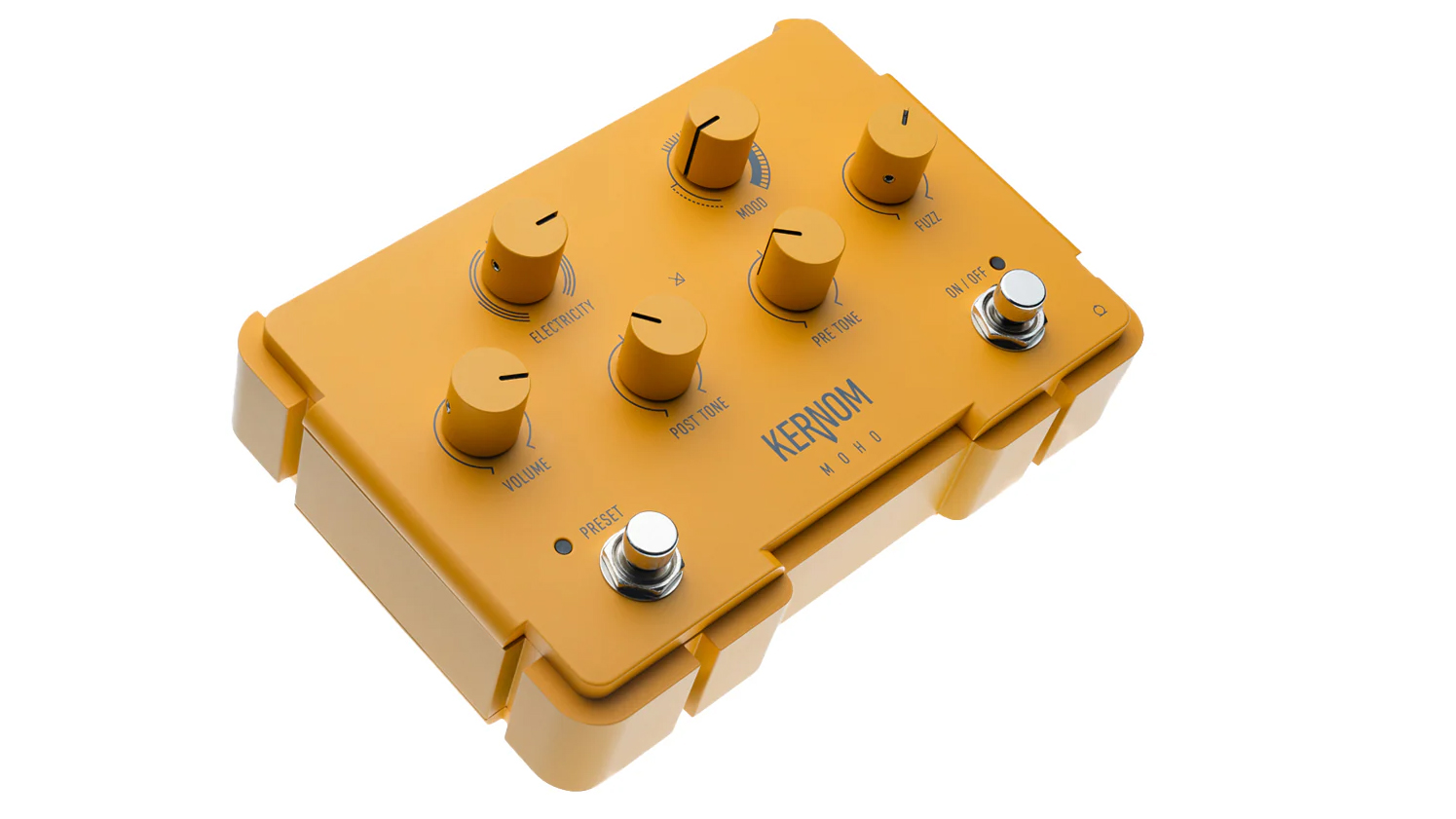
The Moho has two footswitches, one for on/off operation and the other for saving and selecting a single preset. I immediately find a delay on the on/off switch though, which isn’t a deal breaker, but it takes some getting used to. It’s a few milliseconds but as we guitarists know, that could potentially make a lot of difference when performing live.
The preset footswitch only saves a single preset, but technically you can use it to have two presets on the pedal without using an external MIDI controller. Holding down the footswitch saves the current settings, and then when you turn it off, the pedal defaults to whatever the current settings are, so you could set two of your favorite sounds here.
One of its cooler features is the ability to utilize the Mood knob via an expression pedal. This means you can sweep through different sounds, ramping up from a classic 60s fuzz to a Big Muff-style sound without having to reach down to the pedal. It works by bridging the gap between the current favorite set via the preset button and the knob’s current position.
Sounds
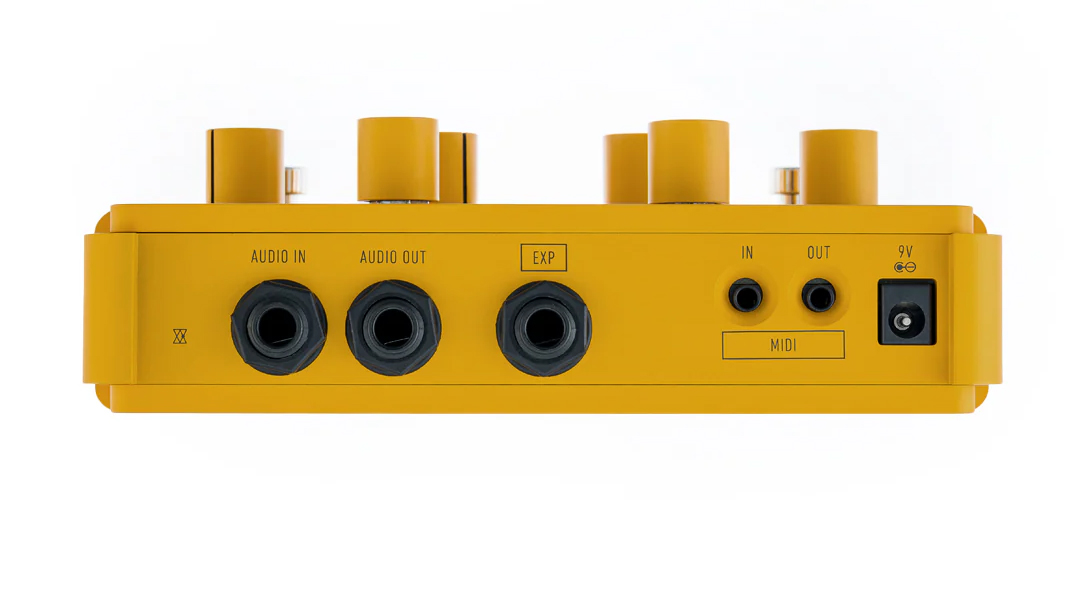
Sounds rating: ★★★★½
Sitting down with my Telecaster and going directly into the clean channel of my Orange Rocker 32 tube amp, I start by putting every knob to the midway position, apart from the mood knob, which is set to the fully clockwise position. I discover there are a lot of different sounds just in the first phase of the pedal, which encompasses many classic fuzz tones. Think thin, gated, velcro fuzz sounds.
Once I get to the 12 o’clock position, I enter full Muff-mode
Turning the knob further to the right opens things up, bringing in those fuller sounds of psychedelia that get a lot gainier. Once I get to the 12 o’clock position, I enter full Muff-mode, a tone that delivers a huge onslaught of sound with bags of sustain on lead notes. Digging into these lets them ring out for an age, and I’m able to coax even more out of it with some wide vibrato. It’s perfect for stoner rock riffing, sounding beautifully thick when I lay into some power chords on the low E string.
Moving to position four, I arrive at some more modern, heavier fuzz sounds. It’s not massively different from the previous Muff-inspired setting, but it piles on the gain and in some positions gets more compressed and spittier sounding. Continuing into the final section, I start finding some genuinely nasty sounds that are more the remit of noise rock. Here, the introduction of discordant ring modulation sounds makes for positively unmusical-sounding tones, with some positions offering a very synth-like quality.
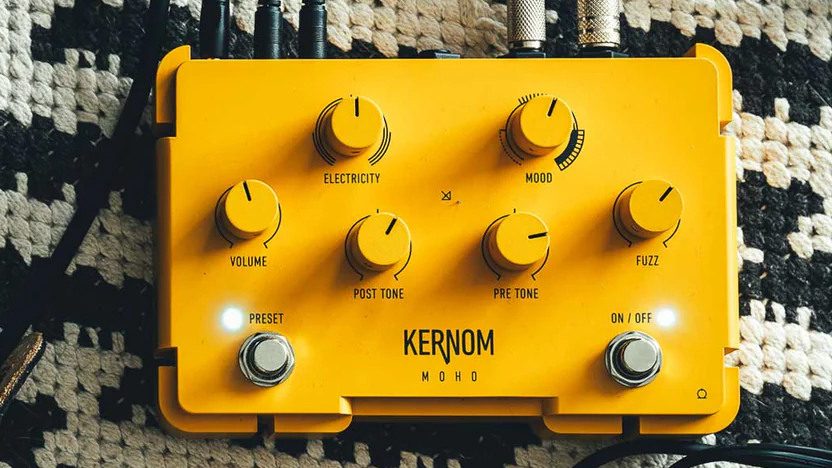
I’m a little underwhelmed by the octave-up sound
Switching back to a more classic fuzz sound, I try out the excitingly named Electricity knob. A full turn to the left adds a chunky, low octave sound which tracks reasonably well. I notice it behaves differently depending on which type of fuzz I’m using though, and there’s quite a bit of difference in how it reacts depending on where you place the knob, from glitched out and gated to a more traditional octave fuzz sound.
Flicking to the far right position, I’m a little underwhelmed by the octave-up sound. Again, it sounds different depending on which fuzz circuit you’ve selected, but I find myself wishing it were a little more present, as it sounds subtle even with the knob fully to the right. For the more classic fuzz tones I can hear it pretty well, but once I start getting into the Big Muff-type sounds it gets lost in the background.
The interplay between the Mood and Electricity knobs means there’s an incredible amount of sounds in the Kernom Moho, with quite literally hundreds of fuzz tones available. Once you start adding in the pre and post tone knobs, you can add even more to that, with everything from the thickest, most saturated fuzz you can imagine right through to the most cutting, raspy fuzz sounds.
Verdict
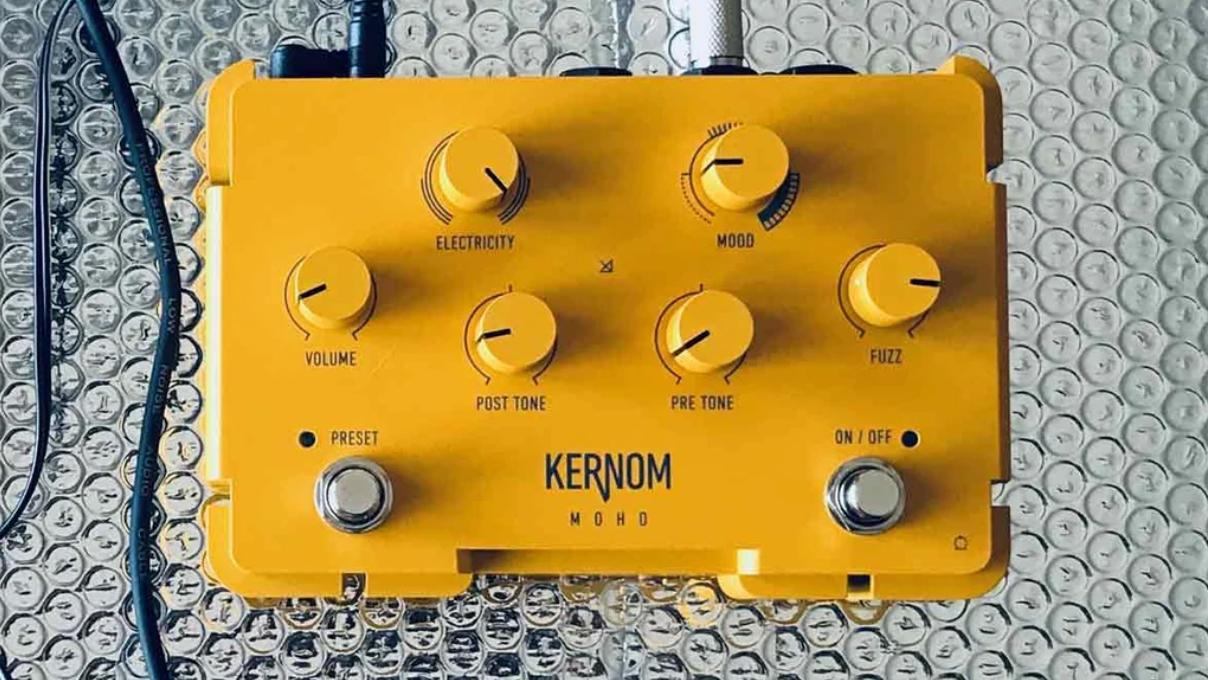
The Kernom Moho Fuzz is a banquet table of tone
There aren’t many multi-fuzz pedals available right now, and with digital modelers still being unsuccessful in replicating many of the classic fuzz sounds to a high enough standard, the Kernom Moho Fuzz is a great choice for any player wishing for all the most popular fuzz tones in a single pedal. It delivers more sounds than you could count, making it an incredibly versatile stompbox for vintage tones, or properly weird ones.
The octave-high sound was a little underwhelming though, only really delivering that classic Hendrix-inspired tone. It sounds great for that particular purpose, but I did find myself wishing it were a little more present on some of the other sounds too. It is also quite heavy while taking up a decent amount of pedalboard space, but considering you're getting a multitude of fuzz circuits in one pedal, I can't imagine anyone getting too put off by that.
Guitar World verdict: The Kernom Moho Fuzz is a banquet table of tone, delivering everything from the thin fuzz of the early 60s right through to today’s modern, modulated, synth-like textures. There are so many options here that it’s going to take you a very long time to extract them all, and no matter what type of fuzz you enjoy, you’ll find something to love here.
Test | Results | Score |
|---|---|---|
Build quality | One of the most robustly built pedals I've ever tested. | ★★★★★ |
Usability | Really intuitive to use, but slight lag when turning the pedal on. | ★★★★½ |
Sounds | An incredibly array of fuzz tones, but the octave up sound is a little lackluster. | ★★★★½ |
Overall | A pedal with an incredible amount of possibilities, a real fun house of fuzz. | ★★★★½ |
Also try
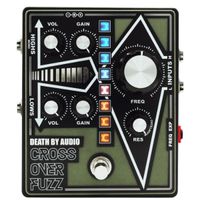
Death By Audio Crossover Fuzz - $320/£369
<p>Another fuzz pedal that does things differently, the Death By Audio Crossover Fuzz allows you to take the low and high end of your fuzz tones and treat them differently, resulting in some really experimental sounds you can’t get anywhere else.Fender The Trapper Dual Fuzz - $179.99 / £129
<p>Despite being a dual fuzz, technically the Fender Trapper has three if you count the octave up sound. It’s very reasonably priced compared to the other pedals here, and you can get a surprising amount of sounds out of it when combined with the tone and contour knobs.<p><strong>Read more: <a href="https://www.guitarworld.com/reviews/fender-the-trapper-dual-fuzz-review"><u><strong>Fender The Trapper Dual Fuzz review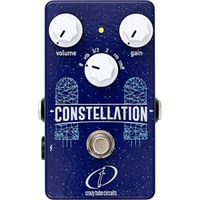
Crazy Tube Circuits Constellation - $299/£299
<p>If you want multiple vintage fuzz circuits in a single pedal, then you should have a look at the Crazy Tube Circuits Constellation. It’s much more compact than the Kernom, but you’ll have to buy second-hand to get one now.Hands-on videos
Pedalboards of Doom
The Studio Rats
Sasha Ivantic

Matt is a Junior Deals Writer here at Guitar World. He regularly tests and reviews music gear with a focus on guitars, amps, pedals, modelers, and pretty much anything else guitar-related. Matt worked in music retail for 5 years at Dawsons Music and Northwest Guitars and has written for various music sites including MusicRadar, Guitar Player, Guitar.com, Ultimate Guitar, and Thomann’s t.blog. A regularly gigging guitarist with over 20 years of experience playing live and writing and recording in bands, he's performed everything from jazz to djent, gigging all over the country in more dingy venues than you can shake a drop-tuned guitar at.
You must confirm your public display name before commenting
Please logout and then login again, you will then be prompted to enter your display name.
